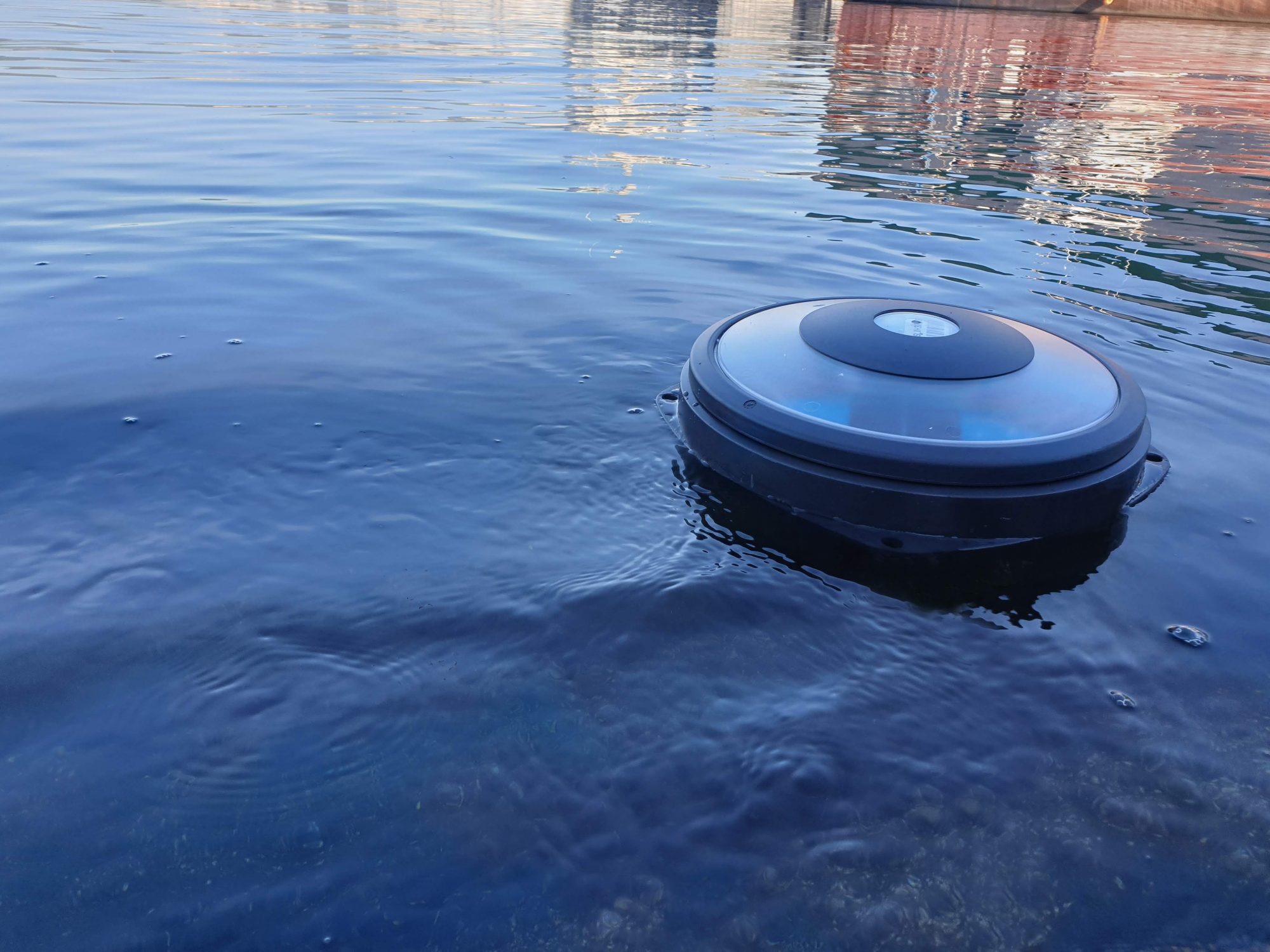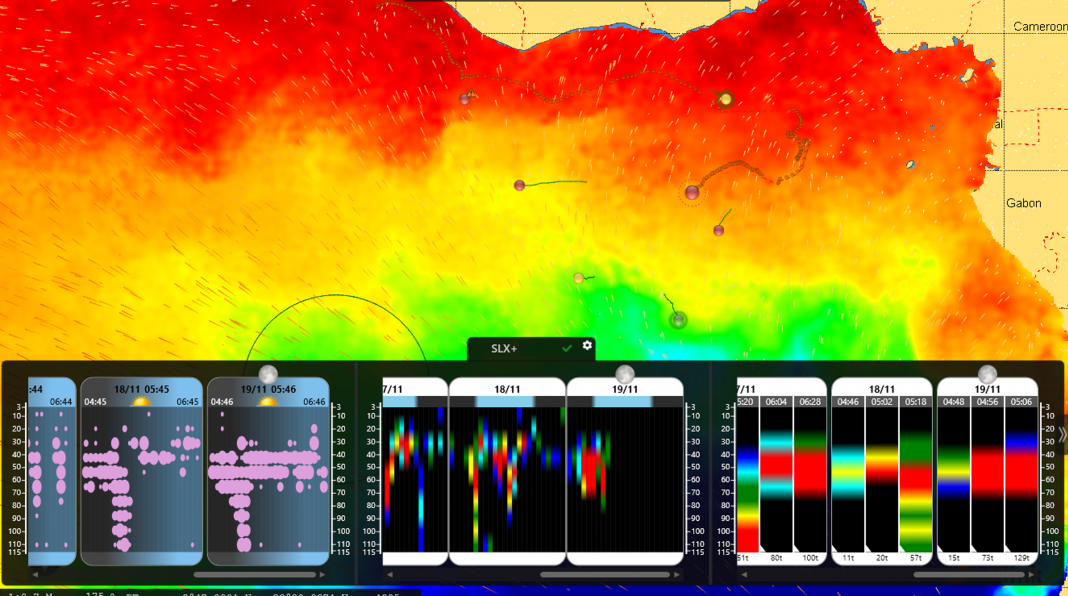Satlink, a leading buoy manufacturer, has partnered with Komorebi AI researchers to develop Tun-AI, a machine-learning protocol that contextualizes echo-sounder data from buoys to estimate tuna biomass, shaping the future of fishery science
In the last few decades, technology has revolutionized how fishermen approach their work at sea. Increasingly advanced technological solutions enable gear selectivity and efficient route planning, foster transparency and improve operational safety, but also provide new ways of looking at the ocean environment. Data from systems on board and deployed by fishing vessels have recently garnered attention from the scientific community, as it can provide new methods of studying how fish species behave, their habitat preferences, or how their populations might react to climate change. Technology providers are instrumental in bridging the gap between the fishing industry and scientists, finding ways to use information to benefit science.
Tropical tuna purse-seine fisheries are one industry in which technology has had a profound impact. For thirty years, vessels have used increasingly sophisticated buoys to track and monitor deployed fishing gear. Today, these smart buoys are equipped with GPS technology and one or two integrated echosounders, providing vessels with real-time estimates of how much tuna and species can be found under each buoy. Of course, this information is enormously helpful for the fishing industry, which has increased fishing selectivity and success and reduced its carbon footprint due to using these tools. However, fisheries scientists have also begun investigating data from these echosounder buoys to better monitor tropical tuna populations and their ecology. To this aim, Satlink, the leading buoy manufacturer, has partnered with a team of researchers from Komorebi AI, in collaboration with the University of Cádiz and the University Carlos III in Spain, to develop Tun-AI, a machine learning protocol which puts raw echo-sounder information from deployed buoys into their oceanographic context, translating data into more representative estimates of tuna biomass.

Tun-AI achieves 92% accuracy in estimating tuna biomass
Tested on over 15,000 buoys across the Atlantic, Indian, and Pacific Oceans, Tun-AI achieved above 92% accuracy in distinguishing whether tuna aggregations were present or absent under the buoy (using a ten-ton threshold). More complex versions of Tun-AI deliver direct estimates of the amount of tuna, achieving an average relative error of 28% compared to ground-truthed measurements, on par with estimates by expert human analysts. Applying Tun-AI to deployed buoys can help fishing vessels focus their attention on buoys with larger aggregations of tuna, increasing catch success while reducing bycatch of less commercially relevant species and improving overall selectivity. On the other hand, by processing echo-sounder information within different environmental contexts in an automated way, Tun-AI opens the door to utilizing data collected from the thousands of buoys deployed by the fishing industry in a cost-effective and timely way.
From a scientific perspective, Tun-AI can complement traditional methods of studying fish behavior at sea. This is particularly relevant for tuna, which, as a highly migratory pelagic species, is generally difficult and expensive to study in situ, so most research is conducted in only specific areas or has a relatively small sample size. However, by applying Tun-AI to echo-sounder data from all tropical oceans, Satlink and Komorebi AI’s team have been able to explore patterns in tuna behavior around drifting objects after analyzing more than 70 million echosounder records over four years. This research has shown that tuna aggregations generally remain around the same floating object for five to seven days. The time it takes for an aggregation to form is roughly symmetrical to when it departs from a drifting object. Although these results align with what has been found by other small-scale studies, it is one of the first studies to look at these patterns on a global scale.
Collaborating science and technology in the fishing industry
The development of Tun-AI is an excellent example of how scientists, guided by technology providers, can collaborate with the fishing industry and undoubtedly pave the way for new ways of studying fish populations. For example, several regional fisheries management organizations have started using information from echo-sounder buoys to complement traditional fishery-derived stock assessment models. By processing information with the advanced machine learning protocols included in Tun-AI, scientists have a reliable and accurate method for monitoring the areas of the ocean where tuna is present and absent, regardless of fishing effort.
With the advent of machine learning and artificial intelligence, it has become possible to gain information on an unprecedented scale, and advanced data processing techniques, such as those used within Tun-AI, hold huge potential for monitoring the ocean environment and the species within. By collaborating with Komorebi AI’s data scientists, Satlink hopes to continue furthering ocean knowledge and coordinating and supporting research efforts gathered by technology.
References
- Navarro-García, M, Precioso, D, Gavira-O’Neill, K, et al (2023). Aggregation dynamics of tropical tunas around drifting floating objects based on large-scale echo-sounder data. Marine Ecology Progress Series (MEPS). DOI: https://doi.org/10.3354/meps14338
- Precioso, D, Navarro-García, M, Gavira-O’Neill, K et al (2022). TUN-AI: Tuna biomass estimation with Machine Learning models trained on oceanography and echosounder FAD data. Fisheries Research Volume 250, June 2022. https://www.sciencedirect.com/science/article/abs/pii/S0165783622000406

This work is licensed under Creative Commons Attribution-NonCommercial-NoDerivatives 4.0 International.


